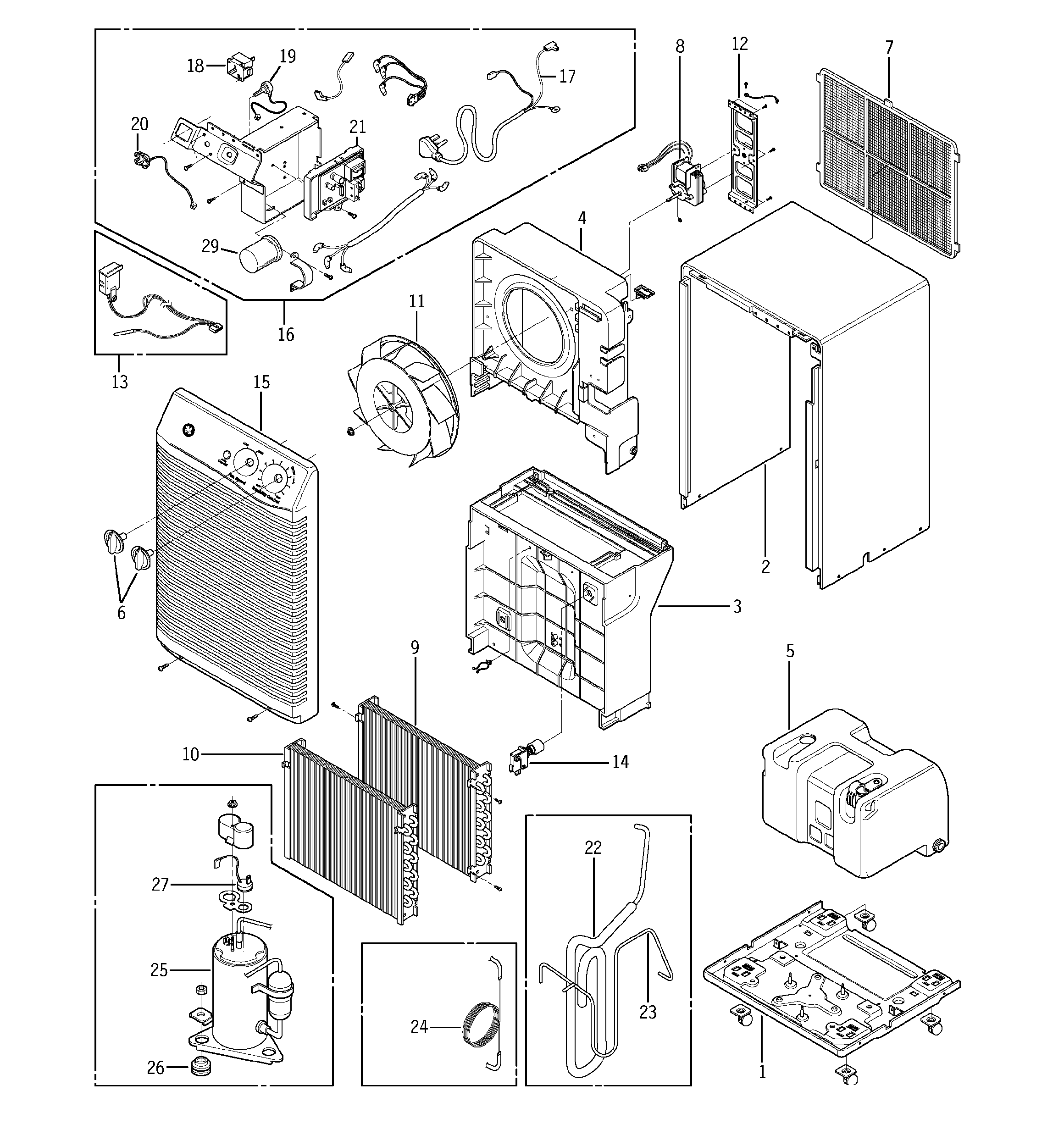Ge Dehumidifier Repair Manual
Rated 1 out of 5 by cocoa44117 from Stopped Working Purchased this unit sometime ago and just after a couple of years, the dehumidifier is no longer removing moisture from the same area in my home that it previously did. This unit was not cheap! I was hoping to get a longer life span from a GE unit. Some common dehumidifier problems include excessive noise, leaking water or a fan that isn’t working. Most of these repairs don’t require a lot of mechanical skill, but you still have to follow the right steps to do this repair. That’s where Repair Clinic comes in.
Written by Hunker Team; Updated July 21, 2017Things You Will Need
Bleach
Household Spray Cleaner
Scrub Brush
Vacuum And Attachments
Soap
Fin Comb
Putty Knife
Screwdriver
Tip
Clean the water-holding tank with bleach at least once a month. Otherwise, mold may grow and be blown around when the dehumidifier runs. If your dehumidifier seems to be running well, yet still won't draw moisture from the air, check the room temperature. Dehumidifiers won't work efficiently below 65°F (18°C).
A dehumidifier is really just an air conditioner working in reverse--it's subject to the same problems and cured by the same repairs. So if your dehumidifier won't pull moisture from the air, the problem could be a simple one that often stops an air conditioner from cooling: The filter and coils are clogged with dirt. The solution? Give it a thorough cleaning.
Unplug the dehumidifier, then remove and empty the water-holding tank.
Remove the front and back grills. You'll have to either use a putty knife and pry between the top of the grill and the cabinet body to release the catches, or use a screwdriver to unscrew the fasteners.
Remove the mesh filter, if your machine has one. It may be attached to the front grill or set in a track in front of the evaporator coils.
Clean the filter with a mixture of warm, soapy water and bleach. The bleach will kill any mold or mildew, so it won't be blown around the room when the machine is running.
Clean the evaporator coils, using a vacuum with brush attachment. Remove any stubborn dirt with a scrub brush and a household spray cleaner, such as Formula 409. Scrub lightly so you don't bend the fins covering the coils.
Inspect the fins. If they are flattened or bent, buy a fin comb at your appliance store and use it to comb up or down on the fins to straighten them.
Clean the condenser coils, using the vacuum and brush attachment. Again, remove any stubborn dirt with the scrub brush and spray cleaner.
Inspect the fins covering these coils. If they are flattened or bent, use the fin comb to straighten them.
Unfasten the cabinet body so you can get access to the interior parts. Use a screwdriver to remove the screws along each side of the bottom of the cabinet. Also check the control panel and the plastic drain tray that directs water into the holding tank. If any screws are holding these parts to the cabinet, remove them.
Remove the cabinet body. Grab each side, pull out slightly and then lift the body off the unit.
Clean the fan blade and the other parts inside the cabinet, using the vacuum and crevice attachment.
Reassemble the dehumidifier, reinstall the water-holding tank and plug in the unit.
Ge Dehumidifier Manual Adel70lrl2
 Cite this Article
Cite this Article